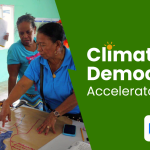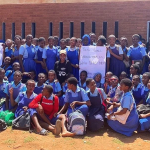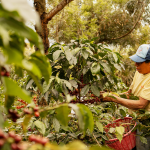By
Happy Tarumadevyanto | Independent Consultant | Environmental Asia | happy.devyanto@environmental.asia
The Movement of Social Forestry in Indonesia is about deepening the historical background of general forestry knowledge that deeply understands that trees, wildlife and humans exist living together in and around the forests. Strengthening Social Forestry is indeed a challenge for the government as a media, the regulation creator that should create a harmonious interaction among different interest stakeholders. Especially a good relationship between the state’s goals and society’s expectation that also helps promoting the development of Social Forestry in this region.
When channeling the issue of Social Forestry and climate change efforts, this is a notable thing that needs attention by our society. Indonesia’s struggle to make Social Forestry work in South East Asia is a historical milestone that shows that the forestry sector does manage forest resources in the form of wood and non-timber and the people who are living in and around the forests itself.
Poverty in The Forests
Around 48.8 million Indonesians live in forest areas, and around 10.2 million of them are classified as poor. “From this data, it is known that 6 million people earn their livelihood directly from forests and around 3.4 million of them work in the private forestry sector,” said forestry observer Imam Suramenggala at the UGM Center for Rural and Regional Studies (PSPK) in Yogyakarta, Friday (30/9/2016). https://ekonomi.bisnis.com/read/20160930/9/588396/kemiskinan-488-juta-orang-indonesia-tinggal-di-kawasan-hutan

However, the government’s forestry development policies so far have not been able to optimally improve the economy and welfare of communities around forest areas. Following are evidences and statements gathered from some sources:
- This is due to the continued distrust between the government and the community regarding the management of forest areas. There is still an opinion that people are destroying forests. Majority of the case that they face several cases of injustice in the management of forests especially rights of forest use.
- In general, It has been detected and based on the current situation that there are four causes of the decline in public trust in the world of law. There is a sharp focus on law enforcement, legal order and legal instruments and the continued occurrence of corruption.
- Overall, public dissatisfaction with the government itself is experiencing an upward trend. A survey from Charta Politika last August showed public dissatisfaction increased sharply from 21 percent in March to 34 percent. In addition we could find a number of opinions regarding public dissatisfaction on the internet. An article from Muhammad Zulfikar Rakhmat and Media Wahyudi Askar entitled 3 Reasons Public Trust in Jokowi’s administration is declining, on The Conversation page, for example, states that public trust is falling because the government is failing to listen to public concerns, criminalizing criticism, and inconsistency in dealing with Covid-19. At first glance, the points above are true. However, the phenomenon of public dissatisfaction with the government does not only government of Indonesia problem, but in many other countries in the world. https://www.pinterpolitik.com/in-depth/kenapa-kita-semakin-meragukan-pemerintah/
- The government’s failure to gather the voices of the people can be interpreted as the need for transparent and just government administration.
- Thus, after fifty years of Social Forestry’s journey (1970-2020), it still seems that we have not been able to prove conclusively that the scathing criticism that Westoby leveled at Academic Forestry in the 1970s can be answered completely by Social Forestry. Even theoretically, it seems that Social Forestry still requires in-depth elaboration, at least so that the simplifications that have been carried out in the academic forestry model are not repeated.
- Social Forestry was widely implemented in forest management in Java by Perhutani, before the government, through the Department of Forestry, initiated outside Java in the form of an early generation Community Forestry program, which was also not related to tenure issues. Community Forest Management (PHBM) is a program from Perum Perhutani which aims to manage forest resources by collaborating with the Forest Village community. The legal basis for PHBM itself is the Decree of the Directors of Perum Perhutani No.136/KPTS/DIR/2001. However, as time went by there were a few more improvements through the Decree of the Directors of Perum Perhutani No. 682/KPTS/DIR/2009 in June. 2009 concerning Joint Community Forest Management (PHBM PLUS) is a forest resource management system with a synergistic collaboration pattern between Perum Perhutani and forest village communities or interested parties in an effort to achieve optimal sustainability of the function and benefits of forest resources and an increase in the Human Development Index ( IPM) which is flexible, participatory, accommodating, has the principles of being together, empowering, sharing and transparent (Bagaskara, 2021). Activities carried out include SDH (forest resources) management planning, utilization of (forest resources) and forest areas, as well as protection of (forest resources) sustainability.
- Inequalities in law enforcement and cases that occur in the management of natural resources, especially forests, increasingly emphasize the need for law enforcement in a fair and equitable manner for our society in Indonesia.
- The 2015 devastating fires that burned 2.6 million hectares of forest and land put Indonesia under a lot of international pressure. In response to this, Jokowi’s administration formed the Peat Restoration Agency (BRG) in 2016 to accelerate the restoration of damaged peat areas, including company concession areas. This body is important to ensure the achievement of Indonesia’s global climate commitments in the forest and land sector. As far as the public understood, as of 2019, peat area recovery had only reached 1.3 million ha, as exemplify here that half of the target of 2.6 million ha in 2020. BRG’s efforts still draw criticism for a lack of transparency around recovery on the ground. Fires are still occurring in peat areas that are claimed to have recovered.
- Expansion of agricultural, plantation and mining areas. The increasing number of foreign investors in the oil palm and coal mining sectors has led to a massive expansion of oil palm plantations and mining activities. The burden on forests also increases because oil palm plantation land usually comes from forest areas which then change function. Apart from that, most coal deposits are located in forest areas. The palm oil and mining industries (which can threaten forest sustainability) also receive profits and support from the financial sector. It is understandable that this industry is very profitable, banks provide low interest rates for opening and expanding palm oil or mining businesses. In addition that the very low land and building tax for forests, making it easy for individuals or companies to ‘own’ thousands of hectares of forest with cheap taxes.









